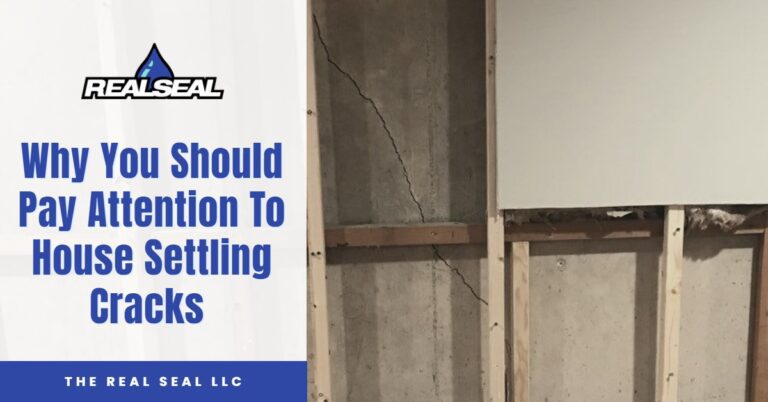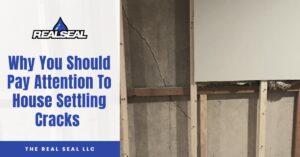If you haven’t been paying attention to house settling cracks, now’s the time to start. But if you don’t know what these cracks look like or when you should worry, this is the article for you. Here you’ll learn why you should pay attention to house settling cracks, the types of house settling cracks, the difference between uniform settlement and differential settlement, and how experts repair house settling cracks.
Why You Should Pay Attention To House Settling Cracks
Before we discuss why you should pay attention to house settling cracks, you need to learn the difference between structural and non-structural cracks. Once you learn the difference between the two types of cracks, you can decide whether or not to have them fixed. But, when it comes to foundations, even the smallest cracks can lead to issues, such as water seepage.
Types Of House Settling Cracks
There are two types of house settling cracks.
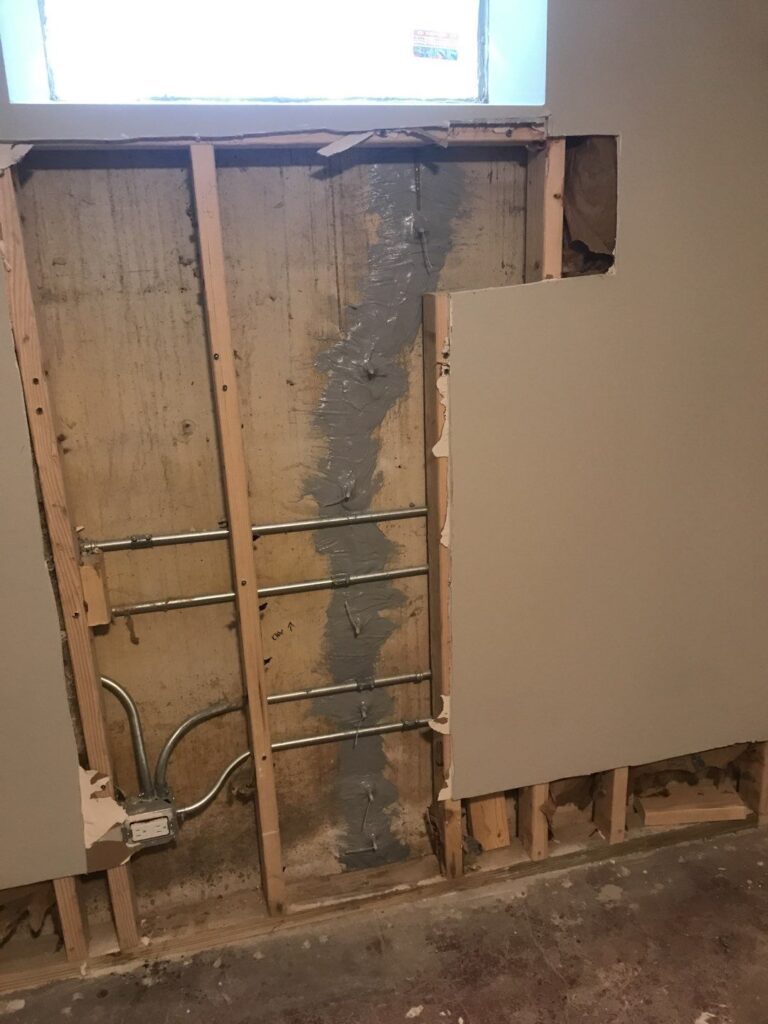
- Structural cracks – As the name suggests, structural cracks pose a threat to your home’s structural integrity. If these cracks are ignored, they can lead to more severe issues like bowing, leaning, shearing, or collapsed foundation walls. These types of cracks are more likely to allow water to seep into your basement, which can lead to mold growth, musty odors, dry rot, and more. Here are some signs that your cracks are structural.
- They are wider than 1/10 of an inch.
- If you have concrete block walls or brick fascia, these cracks could look like stair steps.
- They run horizontally across your foundation wall (sometimes accompanied by bowing).
- They are multiple vertical cracks that run parallel to each other.
- The cracks run diagonally at the corners of your foundation walls on both sides.
- The cracks run across your ceiling and down your walls.
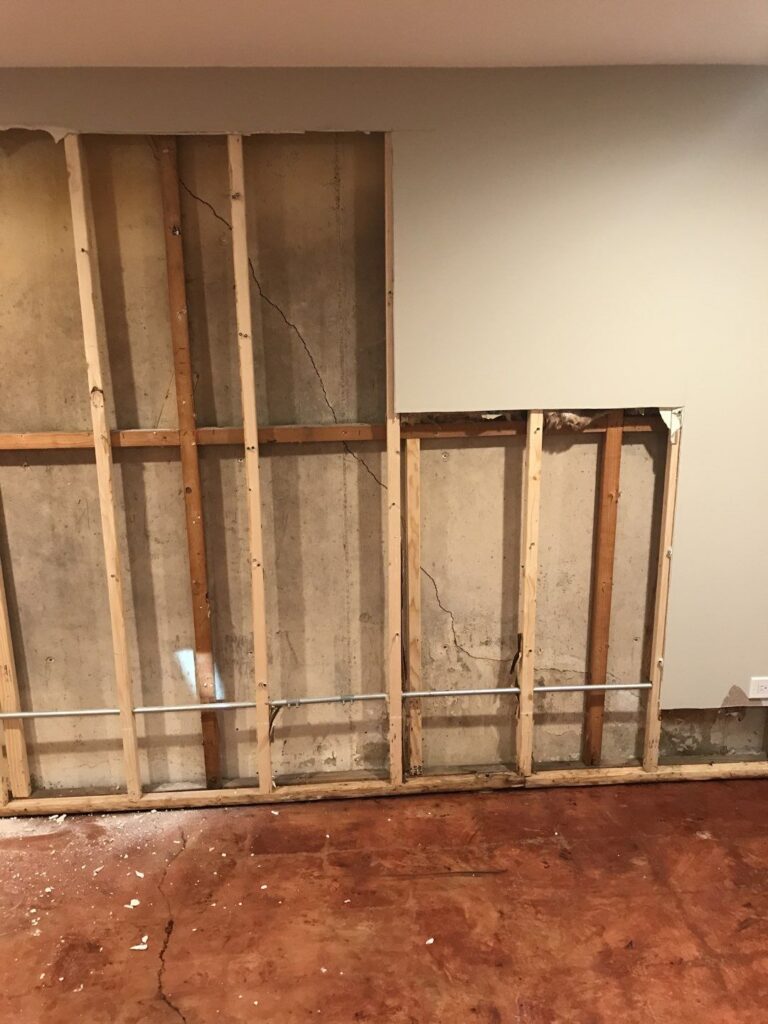
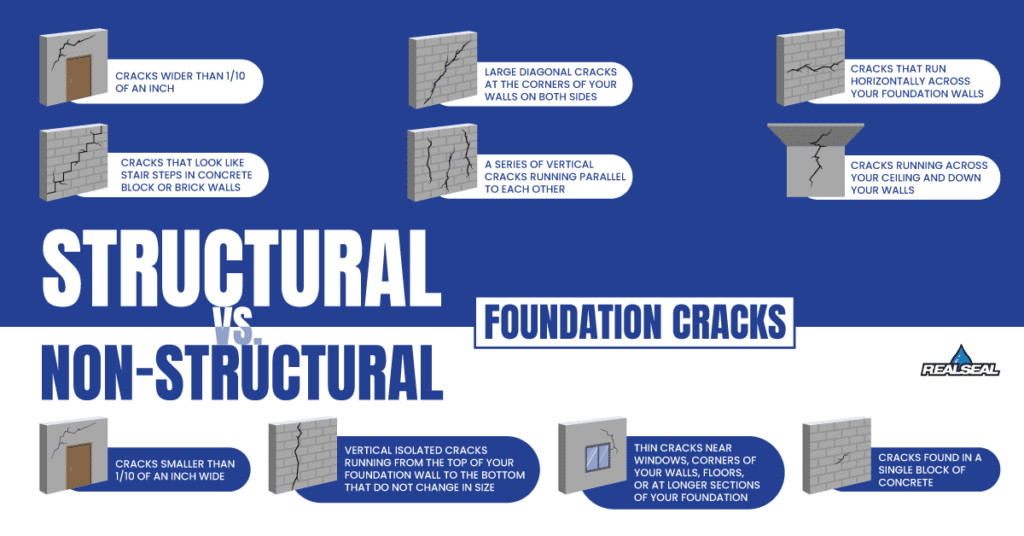
- Non-structural cracks – Also called “waterproofing cracks” (because they can still allow water seepage and we recommend repairing them), non-structural cracks do not pose an immediate threat to your home’s structural integrity. Just to be safe, you should still monitor these cracks to make sure they don’t grow any larger. Here are some signs that your cracks are non-structural.
- They are smaller than 1/10 of an inch wide.
- They are isolated vertical cracks that run from the top of your foundation wall down to the bottom.
- They don’t change in size.
- They are thin cracks near windows, below I-beams, wall corners, floors, or longer sections of your basement walls.
Types Of House Settling That Can Cause Cracks
There are two types of house settlement that could be causing cracks in your foundation.
- Uniform settlement – After your home’s construction is completed, your foundation will slightly settle into the soil beneath it. This is called uniform settlement, and it should only settle under fractions of an inch. Uniform settlement can cause cracks, but these are very small and may not appear at all.
- Differential settlement – Differential settlement is when sections of your home and foundation settle at different or unequal rates. This type of settlement places stress on your foundation, causing various issues such as sticking windows and doors, bowing walls, and structural cracks.
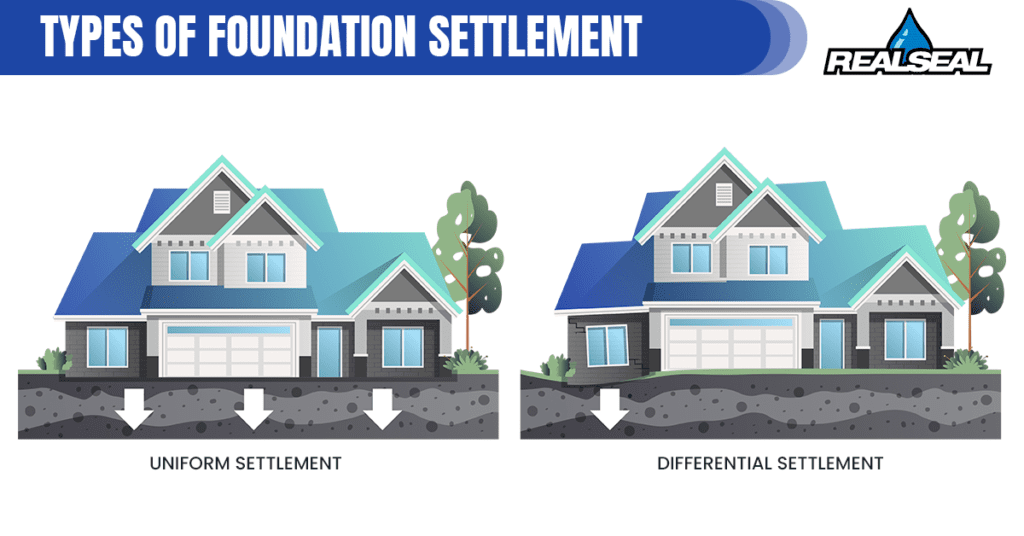
How Experts Repair House Settling Cracks
Here’s how professional foundation crack repair experts fix house settling cracks.
- Structural cracks caused by differential settlement – These types of cracks require more work than simply filling in the gaps. In order to prevent your home from settling further and restore it to the maximum practical level*, experts will lift your home using steel push piers or helical piers. These piers are pushed or twisted underneath your home until they reach load-bearing strata. Once they reach stronger soil, hydraulic jacks lift your home back up.
- Structural cracks caused by bowing walls – If your walls are bowing inward, and that’s what’s causing structural cracks to form, experts can use a few different solutions. If your walls are bowing more than three inches, professionals use wall plate anchors or c-channel anchors to pull the wall back outward. If your walls are bowing less than three inches, experts can use carbon fiber straps to stabilize the movement and prevent further bowing.
*Maximum practical level is the ultimate amount of foundational lift achievable before causing structural or cosmetic damage to a home.
How House Settling Cracks Are Sealed And Stabilized
Here’s how cracks are sealed and stabilized after experts have addressed any other issues.
- Epoxy crack injection – Even if your cracks are structural or non-structural, experts recommend filling them in using a 2-part epoxy injection. First, a surface patch is created using an epoxy bonding solution. Then, the cracks are injected using the 2-part epoxy that waterproofs and reinforces your foundation wall.
- Carbon fiber staples – These high-strength staples are placed along your crack into grinded slots. Then, they are fused into the concrete using an epoxy bonding solution. These staples stabilize the cracks and prevent them from growing even further.
Who Repairs House Settling Cracks Near Me?
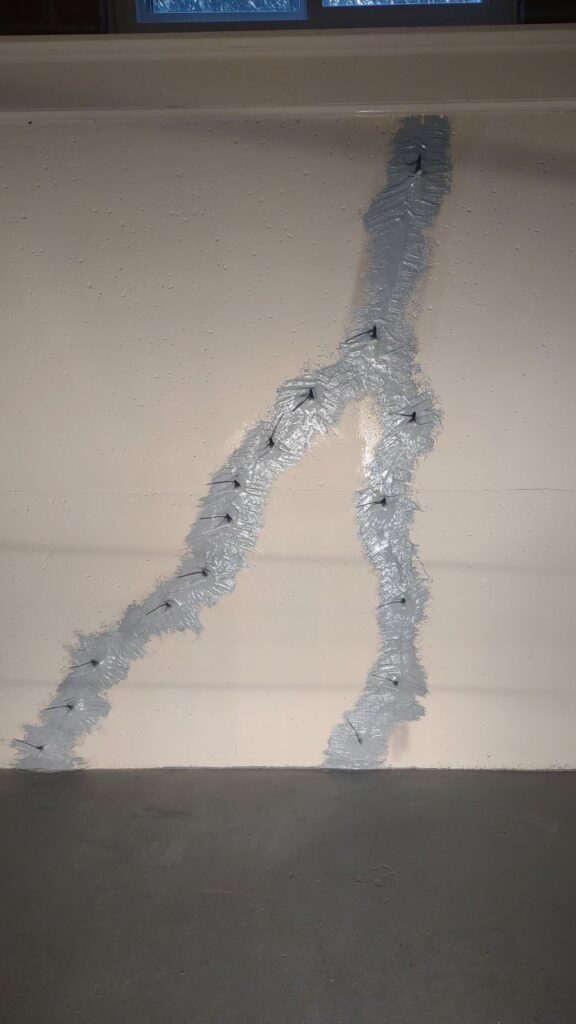
If you live in the greater Chicago area and have house settling cracks, you need to call The Real Seal. We’ll inspect your foundation cracks and determine whether or not they are structural or non-structural. After our inspection, we’ll come up with the best solution for your specific problem. We also provide basement waterproofing, crawl space encapsulation, concrete leveling, and more. Call today for your free inspection and estimate.
